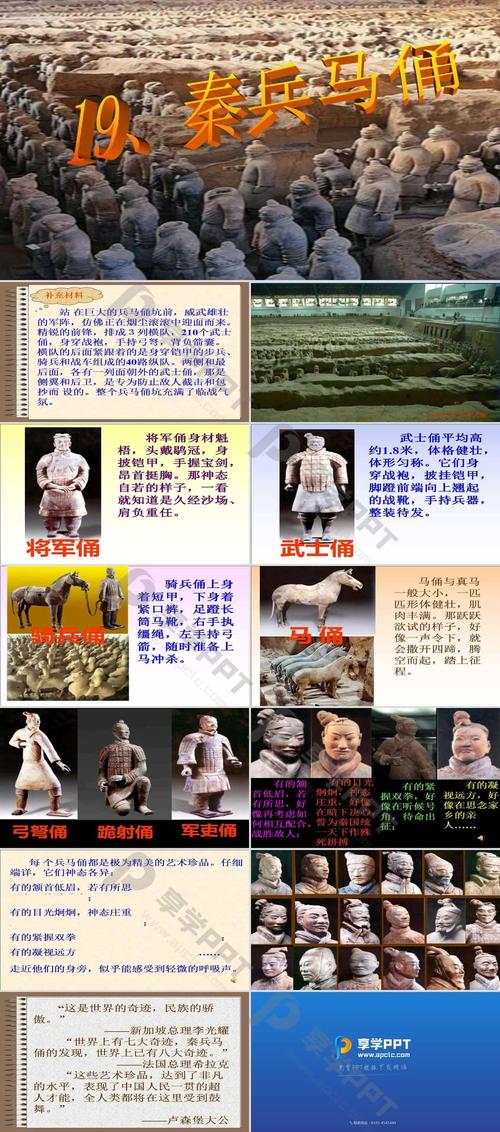
What Was the Main Purpose of the Terracotta Army?
Terracotta: A Versatile Material
In art, pottery, applied art, craft, construction and architecture, "terracotta" is a term often used for red-coloured earthenware sculptures or functional articles such as flower pots, water and waste water pipes, tableware, roofing tiles and surface embellishment on buildings. The durability and versatility of terracotta have made it a popular material for centuries, with its uses ranging from the mundane to the extraordinary.
The Terracotta Army: An Army for the Afterlife
One of the most extraordinary examples of terracotta art is the Terracotta Army of China. This vast collection of life-sized terracotta sculptures depicts the armies of Qin Shi Huang, the first emperor of China.
The army was buried with the emperor in 210–209 BCE, with the purpose of protecting him in his afterlife. This act reflects the ancient Chinese belief in an afterlife that mirrored the earthly realm. The emperor, it was believed, would need an army to command and protect him in the next world, just as he did in life.
More Than Just Soldiers: A Reflection of Power and Grandeur
The Terracotta Army is much more than just a collection of soldier figures. It includes chariots, horses, acrobats, musicians, and officials, all crafted with incredible detail and realism. Each figure is unique, with individualized features and expressions. This attention to detail suggests that the army was intended not only to be functional in the afterlife but also to serve as a testament to the emperor's power and grandeur.
The sheer scale of the Terracotta Army is staggering. With an estimated 8,000 soldiers, 130 chariots with 520 horses, and 150 cavalry horses, it represents a monumental artistic, logistical, and labor-intensive undertaking. The creation of the Terracotta Army involved the work of thousands of skilled artisans and laborers over many years.
A Window into the Past
The Terracotta Army is not only a stunning artistic achievement but also a valuable historical artifact. The figures provide invaluable insights into the military organization, weaponry, armor, clothing, hairstyles, and cultural practices of the Qin dynasty. Their discovery in 1974 has significantly enhanced our understanding of this pivotal period in Chinese history.
Q&A
Q: Why was the Terracotta Army buried?
A: The Terracotta Army was buried with Qin Shi Huang, the first emperor of China, to serve as his guardian force in the afterlife.
Q: What does the Terracotta Army tell us about the Qin dynasty?
A: The Terracotta Army provides valuable information about the military practices, artistry, and cultural beliefs of the Qin dynasty.
Q: Why is the Terracotta Army considered such a significant archaeological find?
A: The Terracotta Army is significant due to its scale, the detailed craftsmanship of the figures, and the insights it provides into the history and culture of the Qin dynasty.